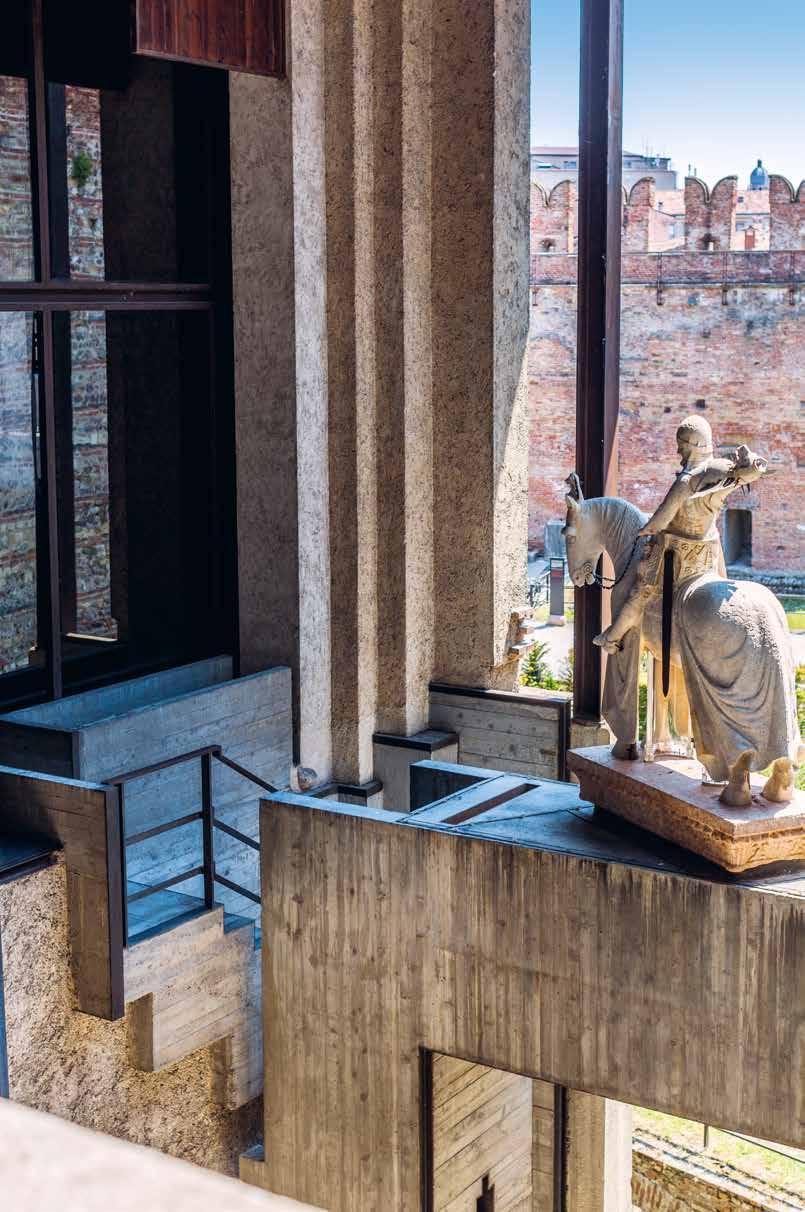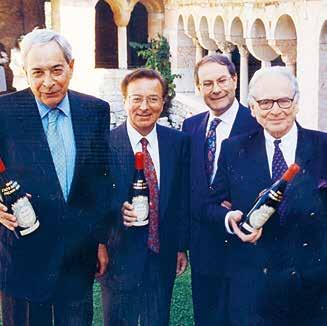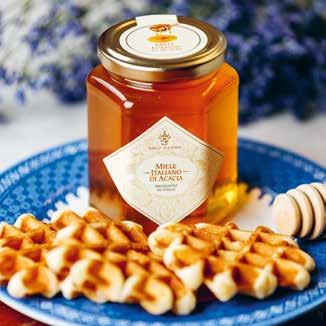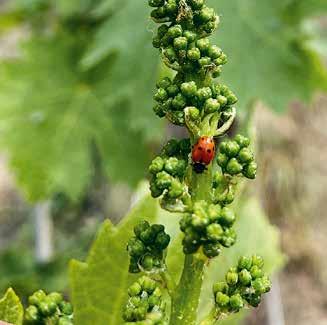
9 minute read
L’Amarone e le sue botti: quando il legno esalta un vino
VITE E VINO NELLE VENEZIE VINES AND WINE IN THE VENETIAN AREA
AMARONE AND ITS BARRELS: WHEN WOOD MAKES WINE FINER
Advertisement
di Daniele Cernilli
Fondamentale la scelta delle diverse grandezze e delle diverse essenze Choice of size and of materials is fundamental
“Non tutti i legni vengono per nuocere”. Dedico questa “Every barrel has a silver lining”. I dedicate this joke battuta a tutti coloro che negli ultimi anni vedono con (Ed. for ‘barrel’ in Italian read ‘cloud’ in English) to molto sospetto il rapporto fra vino e botti di legno, so- all those who have viewed the relationship between prattutto quelle piccole, le barriques di rovere francese. wine and wooden barrels with great suspicion in reCerto, per utilizzarle ci deve essere un vino adatto e non cent years, especially the small ones, the French oak tutti lo sono. D’altra parte, se l’arrosto si brucia la colpa barriques. Of course, the wine has got to be suitable non è del forno, ma di chi non lo ha cucinato con atten- for the barrel, which isn’t always the case. And if the zione. Il discorso vale anche per le botti grandi per alcu- toasting is too fierce, it’s not the fault of the flames, ni. I motivi per i quali si mette del vino in botti di legno it’s the cooper who is at fault. And naturally, the same sono diversi. L’aspetto principale sta nella stabilizzazio- goes with the suitability of some wine for ageing in ne lenta, nel compattare tutti gli elementi, nell’ottenere, large barrels. in sostanza, una maturazione che renda i vini più equi- There are various reasons for putting wine in woodlibrati. Poi c’è il fenomeno della micro-ossigenazione, en barrels. The main one lies in stabilising the eleche si ottiene soprattutto nelle botti piccole, con un leg- ments and facilitating a slow and uniform maturation, gero contatto fra il liquido e l’aria che filtra fra le doghe to make the wine more balanced. Then there is the e che provoca la formazione di mo- phenomenon of micro-oxygenation, lecole di polifenoli più antiossidanti e che ‘tengono’ meglio il colore. L’uso ragionato del legno which is most relevant in the smaller barrels, where the tiny amount Tutti aspetti che c’entrano ben poco stabilizza e dà equilibrio of air that filters between the con l’intenzione di ‘conciare’ il vino a un vino staves causes the formation of ancon elementi estranei, cercando di ottenere profumi legnosi e speziaAccurate use of wood tioxidant polyphenols in the liquid that ‘fix’ the colour better. Which ti che coprirebbero gli autentici castabilises wine and has nothing to do with giving the ratteri delle uve di base, come vie- brings it into balance wine some kind of ‘make-up’ of ne sostenuto da qualcuno, con una foreign elements to impart spicy or
Pagina precedente. L’assemblaggio delle doghe Preceding page. Staves being assembled, below
Nelle affascinanti cantine sotterranee di Masi, Gargagnago, le grandi botti di rovere vanno dai 25 ai 90 hl In the fascinating underground cellars at Masi, in Gargagnago, oak barrels range in size from 25 to 90 hl


perdita di tipicità e un affronto alla ‘tradizione’. Certo, ci sono state esagerazioni e usi impropri da parte di qualche produttore, ma le vere ragioni per le quali vino e legno hanno da secoli un rapporto positivo sono quelle che ho appena provato a spiegare. Nel caso degli Amarone della Valpolicella di Masi, poi, le ricerche effettuate nei decenni per ottimizzare l’utilizzo di botti di diversa grandezza e di diverse essenze di legno, hanno portawoody aromas, or mask the authentic character of the grapes, and fly in the face of typicality and ‘tradition’, as some would claim. Of course, some producers have misused barrels in the past, but the real reason why wine and wood have had such a positive relationship for centuries are the ones I have just tried to explain. In the case of Masi Amarones, research about what size of barrel
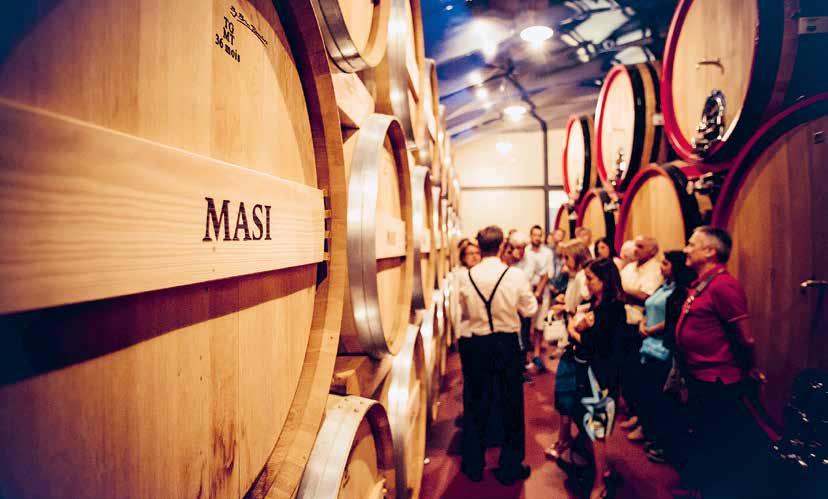
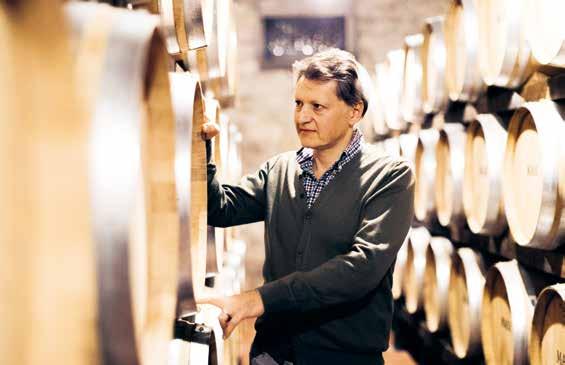
Pagina precedente. Nella cantina di Tenuta Canova, Lazise, i visitatori possono vedere i fusti veronesi e le botti ove affina il famoso Campofiorin di Masi Preceding page. In the cellars at Tenuta Canova, Lazise, visitors can inspect the Veronese casks and barrels used to age Masi’s famous Campofiorin
A lato. Per Andrea Dal Cin, enologo, l’uso del legno deve essere ben calibrato sullo stile del vino This page. For oenologist Andrea Dal Cin the use of wood must be decided according to the style of wine
to a risultati davvero significativi. Intanto va specificato and what type of wood to use has led to some very come l’Amarone sia un vino particolarissimo, frutto del- useful results put into practical use. Of course, it goes la vinificazione di uve, Corvina e Corvinone in massima without saying that Amarone is a very special wine, parte, appassite, e nel caso di quelli della Masi per al- the result of the vinification of mostly Corvina and meno 100 giorni. Questo determina non solo una perdi- Corvinone grapes after a drying period of at least 100 ta di succo, ma addirittura un cambiamento di stato, da days, at the Masi winery in any case. This means the liquido a parzialmente solido, molto glicerico. In più, du- grapes lose liquid and become partially solid, full of rante l’appassimento, ci può essere formazione di muf- glycerine. In addition, the drying process can lead to fe nobili sui chicchi e al contrario di quanto avviene con the formation of botrytis, or noble rot, on the grapes, i vini bianchi ‘botritizzati’, che essendo appunto vinificati and whereas if this happens with white wines, then ‘in bianco’ hanno un contatto molto minore fra mosto e off-skin vinification means there is very little contact muffe; nel caso dell’Amarone, invece, questo rapporto è between the must and the botrytised grape skins, più diretto, perché le bucce macerano nel mosto. but with Amarone the contact is much greater, as the La scelta dei legni per riuscire a ottenere una stabilizza- skins macerate in the must. zione fra tutti questi elementi è stata perciò particolar- The decision about which wood to use to bring all elemente complessa e attenta. L’enologo della Masi Andrea ments of the wine together in harmony is a complex Dal Cin riferisce che proprio per tutti questi motivi, e per one. Masi oenologist Andrea Dal Cin says that the riuscire ad avere un’adeguata ma non need for sufficient but not excessive eccessiva micro-ossigenazione, sono state utilizzate in gran parte dei fusti veroPer l’Amarone usati micro-oxygenation combined with all the other factors has led to the general nesi da 600 litri di rovere francese, pro- fusti veronesi use of 600-litre Veronese-type barrels dotti con la tecnica della piegatura delle di rovere francese made of French oak, produced with the doghe a contatto con il fuoco, esattamente come si fa per le barriques più French-made same technique of using fire to bend the staves as is used with the smallest piccole. Un fusto più grande, però, deterVeronese casks barrels. Larger barrels, however, mean mina un contatto minore fra vino e ossi- used for Amarone less contact between the wine and oxygeno e cede meno sostanze del legno gen, and less aromatic or other influ-
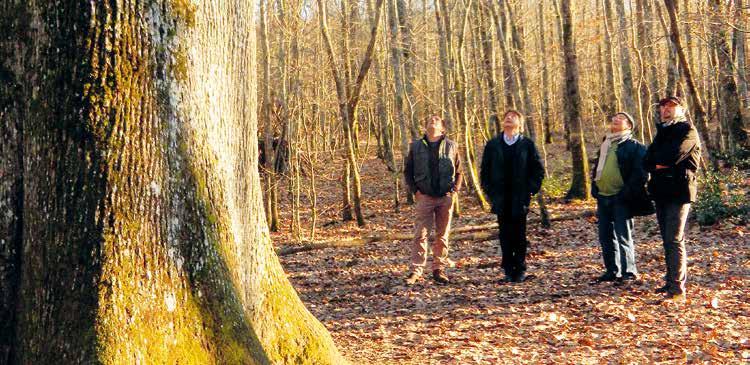
al vino, evitando eccessivi sentori estranei e rispettandone la fase aromatica. L’Amarone Mazzano si avvale solo di questo tipo di botti, mentre il Campolongo di Torbe ha anche una parte in botti grandi di rovere di Slavonia: questo per le diverse caratteristiche espressive che i vini che derivano da questi due vigneti possiedono. Per l’Amarone Costasera il blend di legni è simile ma cambia il peence on the wine from the wood. Mazzano Amarone is made exclusively with this type of barrel, while Campolongo di Torbe is also part-aged in large Slavonian oak barrels, which is a deliberate decision based on the different characteristics that each wine derives from their two respective vineyards. For Costasera Amarone the ‘blend’ of woods is similar; what’s different is the
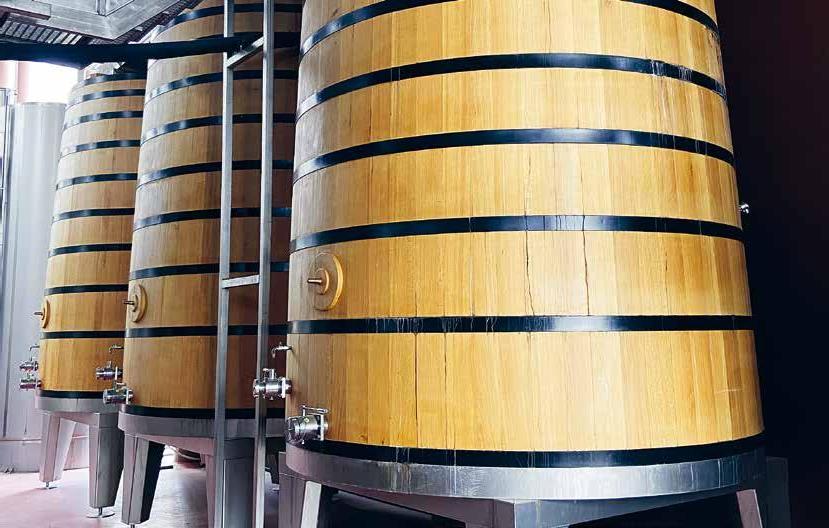
Innovativi tini in rovere francese, creati per Masi, per la fermentazione dell’Amarone Innovative French oak vats for the fermentation of Amarone, made specially for Masi
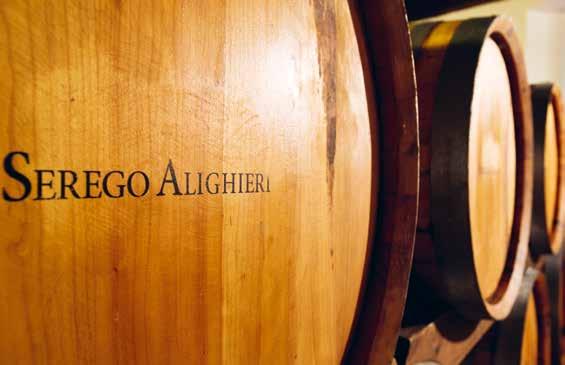
Pagina precedente. La scelta delle piante di rovere Preceding page. Selecting the oak
A lato. In casa Serego Alighieri è antica usanza l’uso del legno di ciliegio per il Vaio Armaron Amarone e gli altri rossi della tenuta This page. At Serego Alighieri it is traditional to use cherry wood for Vaio Armaron Amarone and the other reds made by the estate
riodo di maturazione che è di due anni anziché di tre. Un po’ diverso è il caso dell’Amarone Vaio Armaron e il Recioto Classico Casal dei Ronchi di Serego Alighieri, che si avvalgono per alcuni mesi anche di botti di legno di ciliegio, le quali erano tradizionali in Valpolicella dove, fino a qualche decennio fa, la coltivazione delle ciliegie era diffusissima: con il legno di questi alberi si producevano molti attrezzi in campagna e anche botti. Quel legno però ha un effetto ossidativo più pronunciato e, quindi, dopo tre o quattro mesi, i vini vanno travasati in vasche di cemento e in botti di rovere. Ancora diverso il sistema di stabilizzazione in legno per l’Osar, che è prodotto da uve Oseleta, molto tardive e con una bassa resa di succo. Qui l’abbondanza dei polifenoli è tale da dover essere affrontata con fusti piccoli dove il vino resta anche per tre anni a contatto con le fecce fini, proprio per ottenere un equilibrio ottimale fra componenti così ricche. Fusti diversi per vini diversi, insomma, e tutto in relazione alle differenti caratteristiche che si vogliono focalizzare e fare esprimere nel modo migliore possibile. Questa è la filosofia tecnica di una firma prestigiosa del vino italiano.
Daniele Cernilli, giornalista del vino, dirige il sito ‘DoctorWine’ e ne cura la Guida essenziale ai vini d’Italia dal 2012. È stato uno degli artefici delle ‘Guide del Gambero Rosso’ nel 1986 e ne ha curato le pubblicazioni per quindici anni. Collabora con varie testate nazionali, tra cui ‘Sette’ il settimanale supplemento del ‘Corriere della Sera’. maturation period, which changes from three years to two. Serego Alighieri’s Vaio Armaron Amarone and Casal dei Ronchi Recioto Classico have another important difference: they use cherry wood barrels for a few months, which is traditional of Valpolicella where until very recently the cultivation of cherry trees was widespread, and the wood was commonly used to make tools and barrels too. However, cherry wood has a more pronounced oxidative effect and the wines are therefore decanted into concrete tanks and oak barrels after three or four months. Osar is different again. The wine is made from Oseleta, a late harvest grape with limited amounts of juice. Here the abundance of polyphenols is such that smallsize barrels must be used, to keep the wine in contact with the fine lees for up to three years and bring its strong components into balance. In short, different barrels for different wines, and all intended to bring out specific characteristics in the best possible way. This is the philosophy behind the use of wood at a prestigious Italian wine brand.

Daniele Cernilli, wine journalist, runs the website ‘DoctorWine’ and has published the ‘Essential Guide to the Wines of Italy’ since 2012. One of the founders of the ‘Gambero Rosso Guides’ in 1986; Editor for 15 years. Writes for various national publications, including ‘Sette’, the weekly supplement of ‘Corriere della Sera’.


